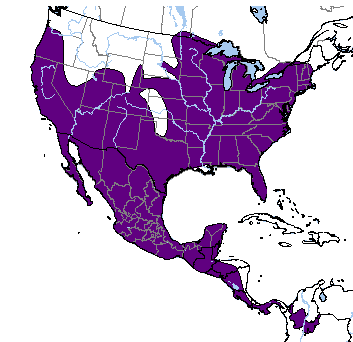Gray Fox
Urocyon cinereoargenteus
IDENTIFICATION
Length: Adult gray foxes can be up to 47 inches in length.
Weight: Adult gray foxes vary in weight from 6 to 15 pounds.
Color: Gray fox have coarse, salt and pepper gray hair with black markings on the head, nose and muzzle. They will also have a medial black stripe down the top surface of the tail with a black tip.
Sounds: yapping, howling, barks, whimpers and screams.
HABITAT
Range: Gray fox can be found from southern Canada to northern Venezuela (South America), excluding the northwestern United States. They tend to stay away from urban areas, preferring a more secluded habitat.
Diet: They are opportunistic foragers that will eat virtually every kind of meat, fruit, vegetable or insect. Their favorite meals are small mammals, especially cotton-tail rabbits.
Status: Least Concern (population stable). Fairly common in southeastern counties of MN.
Gray Fox climbing a tree. Image from ItsNature.org.
Gray Fox tracks. Image from Bear-Tracker.com.
LIFE CYCLE
Reproduction: Gray fox mate in February or March. Gestation lasts about 52 days with 3 to 7 kits born in April/May. The young open their eyes at 10 days, and will venture out of the den after about 4 weeks. At 10 weeks, they are usually weaned, with the father providing solid food for the entire family. They will all remain together until late fall, but will generally be solitary during the winter.
Adaptations: Gray fox are unique in the canid family, in that they are one of two species of canid that climb trees. They have rotating wrists and semi-retractable claws that help them climb up high to den, forage, or escape predators. This is a risky behavior for these fox, as they are not great at climbing down, and can easily injure themselves in the process.
Gray fox are also sometimes known as the “tree fox” or the “cat fox”. Their pupils are oval shaped, rather than slit-like. These fox are common, but very elusive and rare to spot in the wild. They are primarily nocturnal, but may forage during the day.
Gray Fox range. Image from TNWatchtableWildlife.org.






